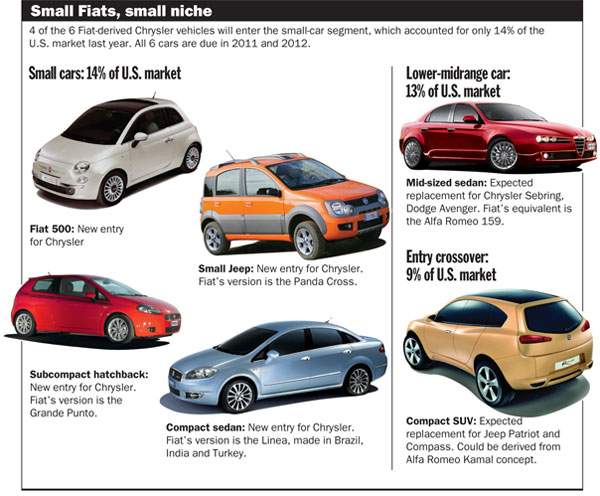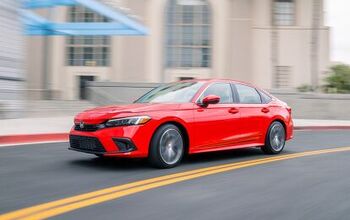NYT: New Chrysler's A Done Deal. GM? Not So Much
Less than three weeks after Chrysler filed for bankruptcy protection, it looks as if the Obama administration will pull off its goal of completing the carmaker’s restructuring by June, allowing it to emerge as a smaller, more viable contender in the global auto market.
Who pressed the Easy button? Reading between the lines, it’s clear that the New York Times editorial board’s faith in “new” Chrysler stems from the fact that they’re planning to build the kind of cars [theoretically] favored by people who live in large urban areas. Hence the fact that The Gray Lady uses the phrase “fuel-efficient” twice in two sentences.
So far, it looks as if Chrysler will emerge from its restructuring a more sensible company, linked up to Italy’s Fiat, which knows how to manufacture and sell fuel-efficient cars. The deal, which could give Fiat up to 51 percent of Chrysler, was designed under the eye of the government to increase Chrysler’s sales overseas and get Fiat to develop fuel-efficient vehicles in the United States by 2013.
To use one of my father’s old jokes, Chrysler’s like the man falling from the top of the Empire State Building. “How’s it going?” “So far so good.” Before we share the Gray Lady’s disquietude with the forthcoming GM C11, a quick aside, via Automotive News [AN, sub], on Chrysler’s small car future. Simply put, AN‘s not buying it.
Four of the six new vehicles from Fiat will enter the small-car segment, which Chrysler had abandoned. That crowded segment covers only 14 percent of the entire U.S. light-vehicle market.
The two other vehicles simply will replace current Chrysler vehicles.
So in the coming years, the bulk of Chrysler’s revenue still must come from current big-volume mainstays such as the Dodge Ram pickup and Dodge Caravan minivan.
God forbid these “mainstays”—which offer US taxpayers the best chance of recuperating some $18 billion from the ChryCo deal—should fall afoul of the Obama administration’s CO2-aversive tailpipe regs. Anyway, digression over. Back to the New York Times‘ Cassandra-like GM warning.
Even assuming G.M.’s likely bankruptcy ends felicitously, the automaker will have to pull off the trick of becoming an entirely different company — one that can make fuel-efficient cars to serve a future of expensive energy and environmental strain and then persuade American consumers to buy them. It has little experience with either.
Culling the Hummer and launching the Chevy Volt won’t be enough. G.M. must swiftly pare its gas-guzzling truck and S.U.V. lines, which last year accounted for 11 of its 20 top-selling brands. It must accelerate development of gas-electric hybrids and other higher-technology cars. Pulling this off successfully could well require further help from Washington to coax drivers to pay the premium for fuel-efficient cars.
Democratic talking points? The mind boggles, while my wallet cowers in fear.
More by Robert Farago
Latest Car Reviews
Read moreLatest Product Reviews
Read moreRecent Comments
- ToolGuy TG likes price reductions.
- ToolGuy I could go for a Mustang with a Subaru powertrain. (Maybe some additional ground clearance.)
- ToolGuy Does Tim Healey care about TTAC? 😉
- ToolGuy I am slashing my food budget by 1%.
- ToolGuy TG grows skeptical about his government protecting him from bad decisions.


































Comments
Join the conversation
With many small rural communities losing their local dealerships, will customers be willing to drive 50 miles or more to buy a new vehicle, and then be required to travel back to that dealership for service and/or warranty repairs. Many farmers with cars and work trucks (yes, gas hog trucks) will undoubtedly prefer to just keep their present vehicles repaired by local independent shops rather than purchase from someone unfamiliar to them. I just read a sad story from CNN about a small rural Chrysler/Dodge dealer. Check it out at this link www.facebook.com/ext/share.php?sid=84493971842&h=r5mDO&u=b63ZD&ref=nf
Hey, sorry about that facebook link, the reporter and his wife are personal friends. Instead check this link: http://www.cnn.com/2009/US/05/18/chrysler.dealer.claxton/index.html